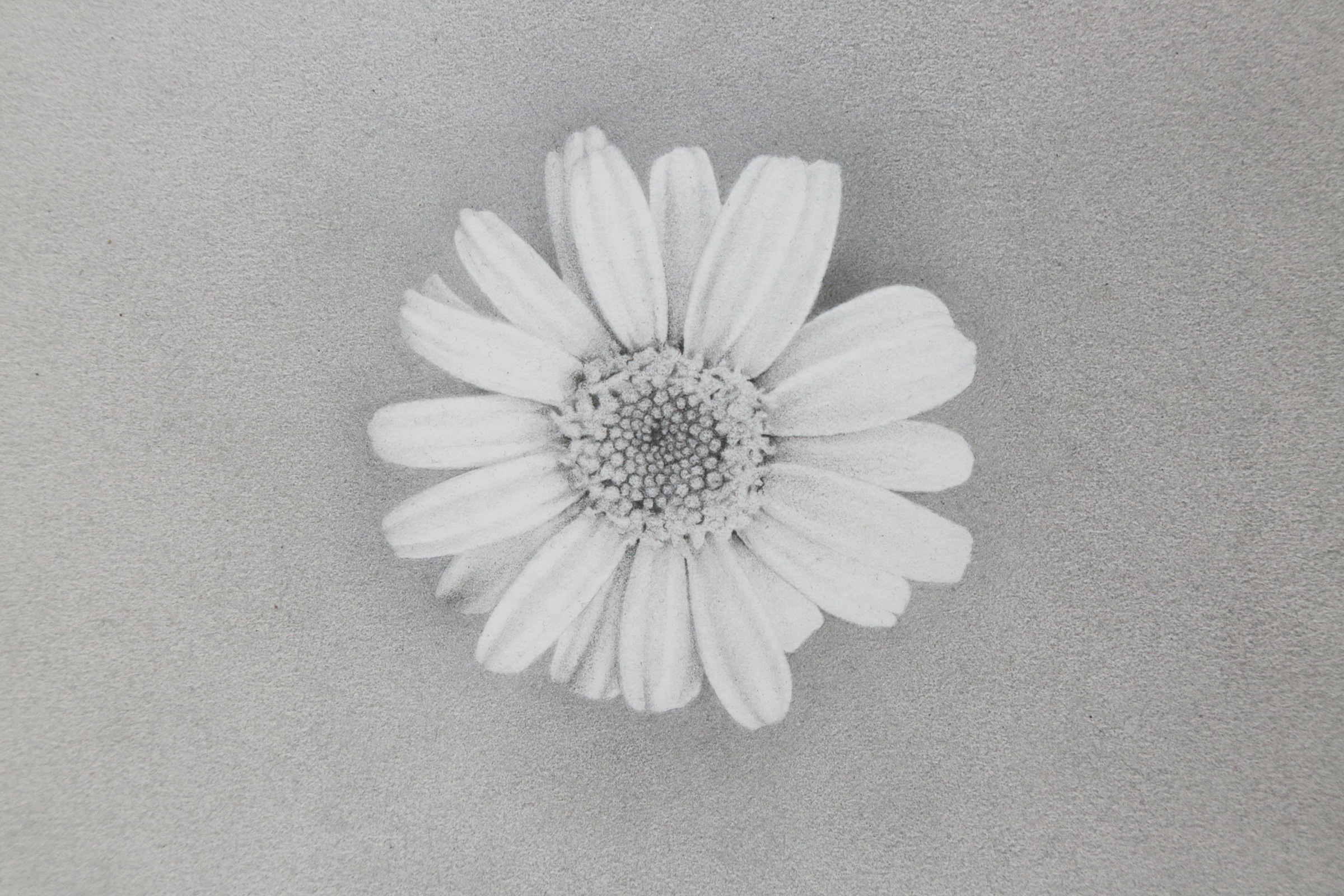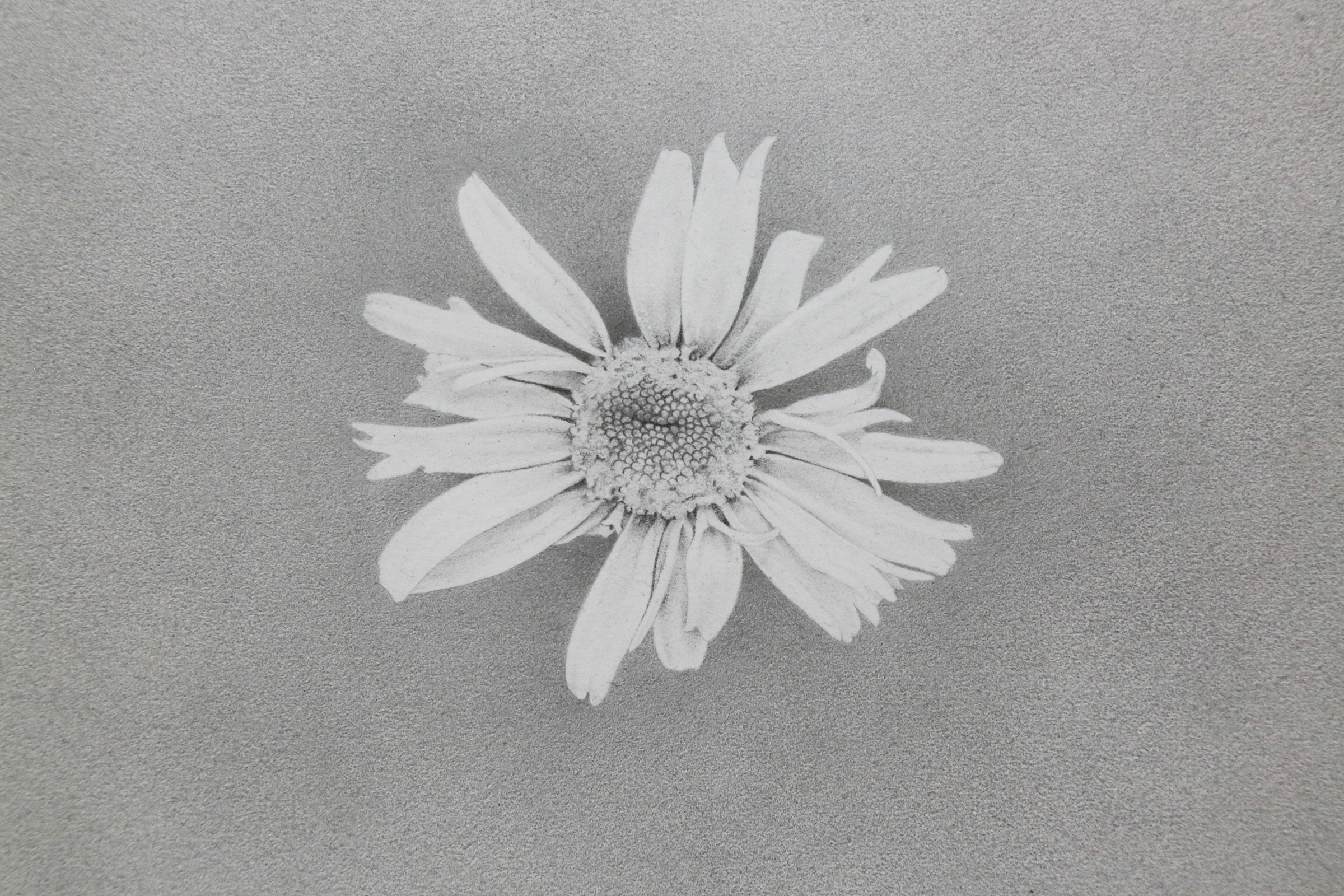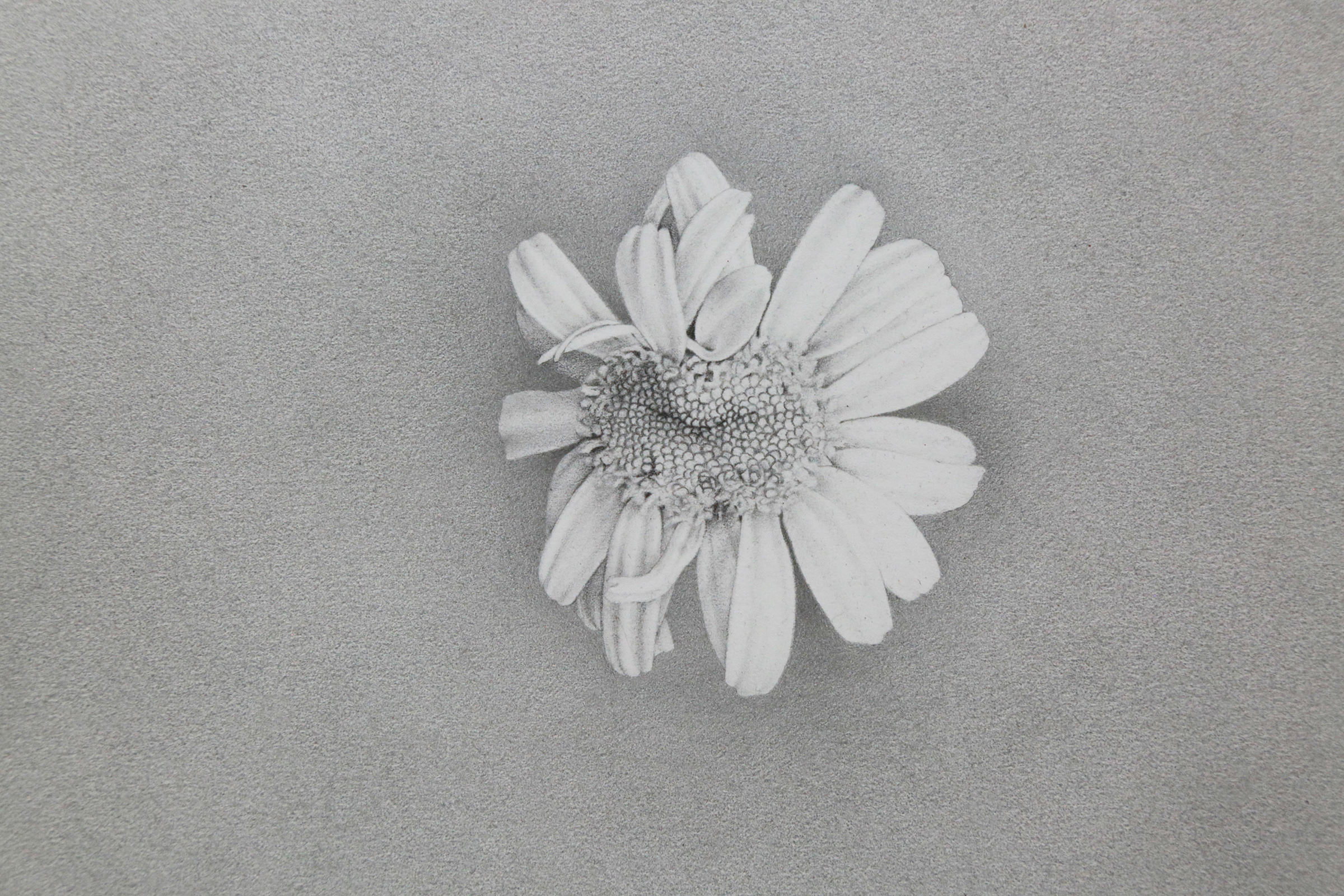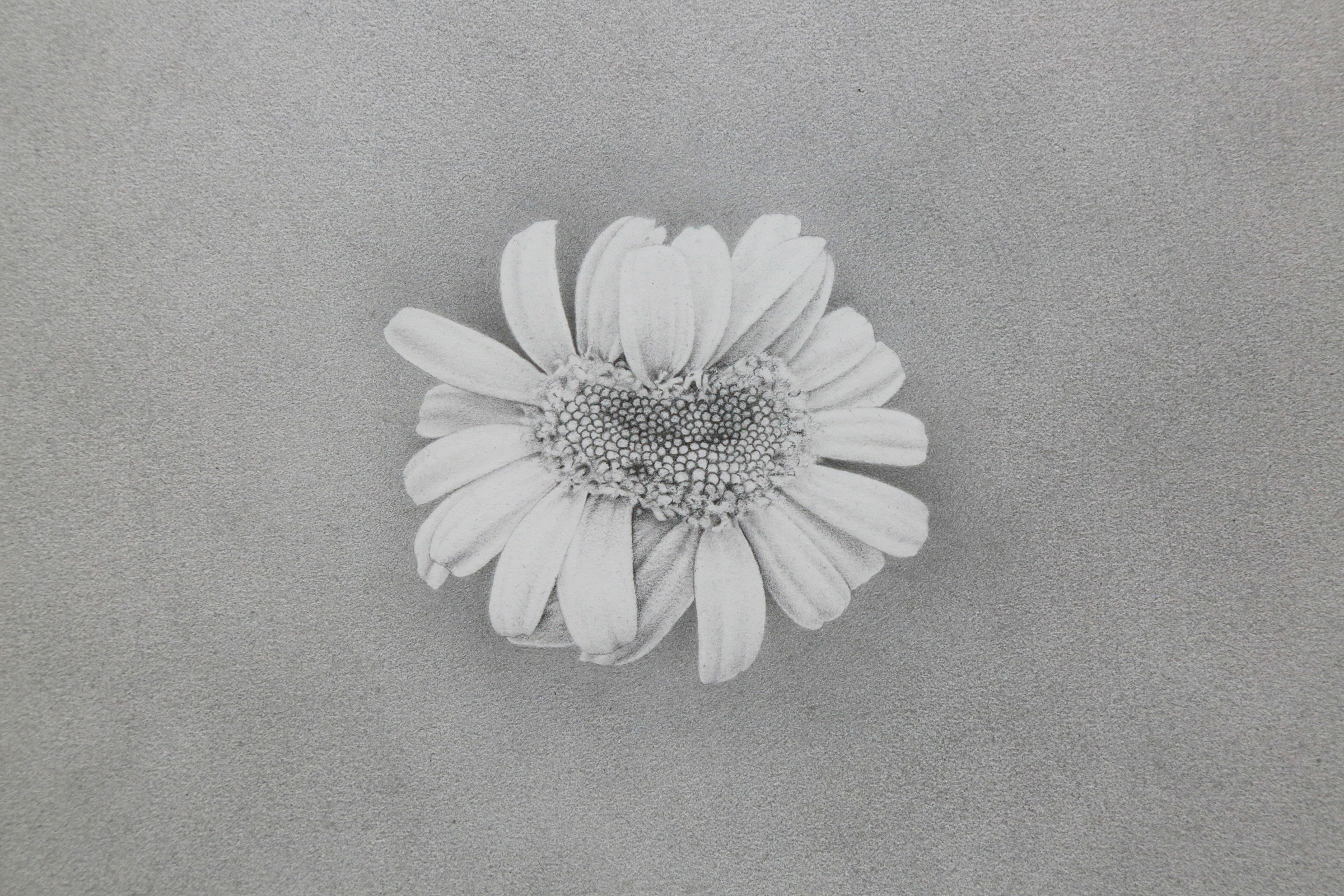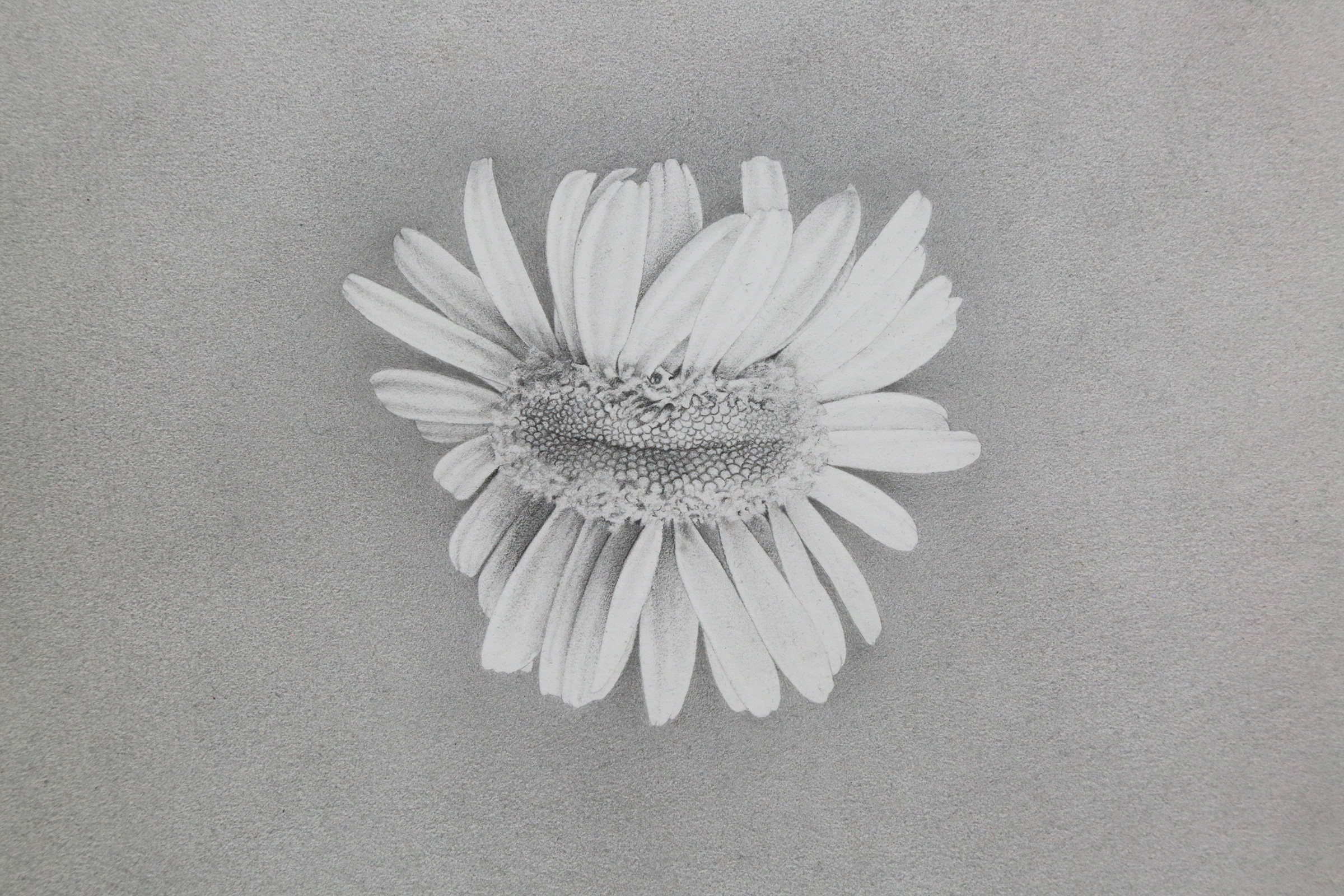Pushing Daisies
- Megan Gafford
If we want to know the truth, we must try to break our ideas. This was Karl Popper’s (1959) philosophy of science, and I think it wise because it feels arduous to doubt ideas that we love. Wanting something to be true can make it tough to realize when we’re wrong. As Mary Shelley (1818, 16) wrote, “Nothing contributes so much to tranquilize the mind as a steady purpose–a point on which the soul may fix its intellectual eye.”
Upon falling in love with the idea of learning truth through science, I started making art about science, and then with it. A physicist helped me dose daisy seeds with radiation to mutate them like flowers found near the 2011 Fukushima meltdown. Those blossoms were elongated like caterpillars. The misshapen daisies reminded me of Lyndon Johnson’s infamous 1964 campaign ad depicting a little girl counting daisy petals until a nuclear explosion engulfed the television screen. The cartoonish and childlike daisy is a potent symbol of innocence or–in the case of mutant daisies–innocence corrupted.
I wanted to use these associations to make art that would evoke the tension between pursuing knowledge and curiosity killing the cat. This was how I tried to slaughter my sacred cow. To uphold Popper’s principle, I knew that I should wonder about the blind nature of science; although science opens our eyes to how the world works, it is also an amoral tool with indiscriminate applications. Just as someone can use a hammer to build or to bludgeon, science can be used for wonder or for weapons. Because I hold curiosity sacred, I needed to explore whether it could be taken too far.
I felt elated when the first strange blossoms emerged from my irradiated seeds. Some were subtle–misshapen petals here and there, a slightly squished center–but others were extraordinary. I preserved them in resin sculptures that were supposed to elicit contradictory emotions, like pleasure tinged with apprehension. The beautiful flowers were meant to attract; the knowledge of what I had done to them was meant to unsettle.
In this way, I wanted to continue the Romantic tradition of grasping at the sublime: experiences that inspire awe and angst in equal measure. But whereas the Romantics rejected science in their paintings of natural splendor, I tried to locate the sublime in human ingenuity. Laboratories can be luscious landscapes, too.
My use of scientific processes has sometimes led people to ask how my work is art, rather than science. Tellingly, scientists have never considered me one of their own; only artists have asked me this. The question has annoyed me. If a urinal could become art in 1917, then why not a mutant daisy a century later? My short answer has been, “Because I aim at beauty.”
Sometimes it seems like art and science are rivals. Manhattan Project physicist Richard Feynman (1981) once described this argument he had with an artist:
He would hold up a flower and say, “Look how beautiful it is,” and I would agree. And he says, “You see, I as an artist can see how beautiful this is, but you as a scientist take this all apart and it becomes a dull thing.” And I think that he’s kind of nutty . . . I see much more about the flower than he sees. I can imagine the cells in there, the complicated actions inside, which also have a beauty. I mean, it’s not just beauty at this dimension of one centimeter, there’s also beauty at smaller dimensions: the inner structure, also the processes. The fact that the colors of the flower evolved in order to attract insects to pollinate it is interesting. It means that insects can see the color. It adds a question: does this aesthetic sense also exist in lower forms? Why is it aesthetic? All kinds of interesting questions, which the science, knowledge, only adds to the excitement, mystery, and awe of a flower. It only adds. I don’t understand how it subtracts.
If renowned scientists bristle at artists who think they have a deeper relationship with beauty, then perhaps I have given the wrong answer to that annoying question about my work. Sometimes I’ve elaborated: “Because I’m not trying to solve the puzzle.” I’ve never wanted my art to become propaganda for my position on, say, the safety of nuclear power or the wisdom of mutually assured destruction. Instead, my clarion call has been Rebecca Solnit’s description of the division of labor between artists and scientists: “[Scientists] transform the unknown into the known, haul it in like fishermen; artists get you out into that dark sea.” If scientists clarify, then I have tried to linger within the mystery.
This, too, has probably been the wrong answer. Rather than stimulate curiosity, my art has too often operated as a Rorschach test. A typical example: people who fear nuclear power have viewed my daisies as a case-in-point and assume I also consider it a reckless technology (although I disagree). I don’t know that I have ever opened up closed minds or roused admiration for nuance. Lofty ideals like “linger within the mystery” are stillborn if the artwork is simply vague.
Maybe the most honest explanation has been, “Molding nature to my will feels exhilarating.” Perhaps in exploring themes of mad scientists and Promethean figures, I became one myself. I have never cared that some of my peers consider me a Dr. Frankenstein, though. Why let something as pedestrian as reputation sully the search for the sublime? But I have grown bored with my approach, because it risks becoming formulaic: Disquieting Science + Beauty = Art.
Moreover, this kind of art has taught me what it can about scientific amorality. Curiosity can become a consuming passion like lust, aching for catharsis. Especially when getting results is uncertain at the outset, emotion can dominate the struggle to discover what is possible. Indulging this hot pursuit has given me a visceral understanding of the temptations the devil uses to strike a Faustian bargain, and taking the deal has helped me plumb the human condition. Having completed this lesson, I must now try to break my new ideas.
References:
Feynman, Richard. 1981. “The Pleasure of Finding Things Out.” Horizon, BBC TV, November 23, 1981. Video, 50:02. vimeo.com/340695809
Popper, Karl. 1959. The Logic of Scientific Discovery. London: Hutchinson & Co.
Shelley, Mary Wollstonecraft. (1818) 1985. Frankenstein; or, The Modern Prometheus. London: Lackington, Hughes, Harding, Mavor, & Jones. Reprint, New York: Penguin Classics. Citation refers to the Penguin edition.
